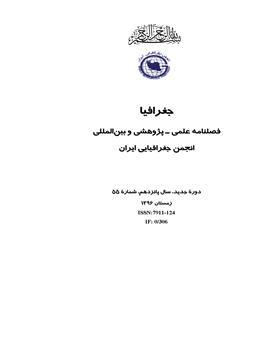تحلیل فضایی توسعه در نواحی روستایی استان سمنان مورد مطالعه: شهرستان دامغان
محورهای موضوعی :عبدالرضا رحمانی فضلی 1 , فرهاد عزیزپور 2 , مریم شامانیان 3
1 - دانشگاه شهید بهشتی
2 - دانشگاه خوارزمی
3 - تهران
کلید واژه:
چکیده مقاله :
نیل به تعادل و کاهش نابرابری در نظام سکونتگاه های روستایی کشور مستلزم بررسی و شناخت منابع و امکانات این سکونتگاه هاست. در واقع تحلیل فضایی توسعه، نابرابری و میزان محرومیت نواحی مختلف و اولویت اقدامات را برای ارتقای سطح زندگی مشخص می کند. پژوهش حاضر بر اساس هدف، کاربردی و روش پژوهش توصیفی- تحلیلی است. داده های موردنیاز با بهره گیری از 29 شاخص در ابعاد مختلف و به روش اسنادی به دست آمده است. محدوده مورد مطالعه شهرستان دامغان و جامعه آماری پژوهش روستاهای دارای سکنه شهرستان دامغان هستند. وزن دهی به شاخص های پژوهش با استفاده از مدل F’ANP و تحلیل داده ها با استفاده از روش تصمیم گیری چندمعیاره VIKOR انجام شد. برای طبقه بندی روستاهای مورد مطالعه از جنبه سطوح توسعه یافتگی و تحلیل نابرابری ها آن از روش تحلیل خوشه ای و برای تحلیل میزان اثرگذاری مولفه ها (مورد تاکید در مدل مفهومی) بر شاخص نهایی توسعه در سطح ناحیه مورد مطالعه از رگرسیون خطی استفاده شده است. نتایج پژوهش نشان می دهد توسعه در نواحی روستایی مورد مطالعه به صورت یکپارچه، همگون و عادلانه اتفاق نیفتاده است. الگوی فضایی این وضعیت، به صورت الگویی نامتعادل عینیت یافته است. در این الگو، جمعیت و امکانات در چند روستا از تراکم بیش از حد و در دیگر روستاها از تراکم کم برخوردار است. این امر، سبب مهاجرفرستی به خصوص مهاجرت جوانان و در نتیجه به هم خوردن تعادل سنی و جنسی، تضعیف بنیان های اقتصادی و افزایش نرخ بیکاری شده است. هم چنین، این نابرابری توسعه در ناحیه روستایی شهرستان دامغان، بیش از همه متأثر از دو عامل “دسترسی به خدمات رفاهی و سطح مشارکت اقتصادی” بوده است.
Achieving the balance and reducing the inequality in rural settlements requires studying and identifying the resources and facilities of these settlements. Indeed, spatial analysis of development identifies the inequality and deprivation of different areas and prioritizes actions to improve the quality of life. The present study is based on the purpose, applied and research method of descriptive-analytic. The required data are obtained using 29 indicators in various dimensions and by documentary method. The study area is Damghan and the statistical population of the study is all the inhabited villages of Damghan. The research indicators weighted using F'ANP model and data analyzed using VIKOR multivariable decision making method. Cluster analysis used in order to classify the studied villages, from the aspect of developmental levels and analysis of their inequalities, and linear regression used to analysis the effectiveness of the components (emphasized in the conceptual model) on the final index of development in the area of the study. The results of the study indicate that the development in rural areas of the study has not been uniformly and fairly. The spatial pattern of this situation has become unbalanced. In this pattern, population and facilities in some villages are overprovision and in the others are under provision. This has caused immigration, in particular among young people, and thereby eliminating the age and gender balance, undermining the economic foundations and raising unemployment rates. Also, this developmental inequality in the rural districts of Damghan city was most affected by two factors: "access to welfare services and the level of economic participation".


